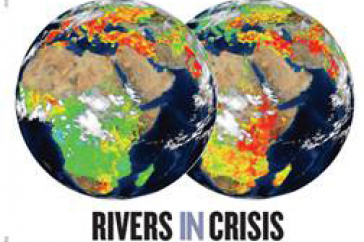UNH Researchers Develop Technique to Identify World's Most Abundant Organisms

DURHAM, N.H. - Researchers at the University of New Hampshire's Hubbard Center for Genome Studies (HCGS) have developed a "barcoding" technique that's shedding new light on the biodiversity of some of the world's most abundant and interesting creatures.
The technique, called environmental metagenetics, applies high-throughput DNA sequencing -- like that used to sequence human genomes -- to an environmental sample such as a patch of sand. The technique provided the analytical tool for a study published last week in the new journal Nature Communications; the study found that the biodiversity of sand from a Scotland beach contains a far richer, more complex web within its ecosystem than previously thought. And on the oil-splattered sands of the Gulf of Mexico, HCGS researchers are using the technique to better understand the effects of the Deepwater Horizon oil spill on these microscopic creatures.
These small yet complex organisms, including nematodes, fungi and protists, are invisible to the eye but abundant in marine and terrestrial environments - from sandy beaches to garden plots. "If you're making a sandcastle, there are thousands and thousands of these creatures in a handful of sand. They provide key ecosystem services," says W. Kelley Thomas, Hubbard Professor in Genomics and director of the HCGS. They process waste, cycle nutrients, "eat" spilled oil, and generally "make beaches places we want to visit," he adds.
The traditional taxonomic approach to biodiversity involves looking at an organism and describing the features - legs, wings, teeth, leaves - that make it similar or distinct from other organisms. Because taxonomy is far easier and more efficient to apply to cats and cows and pine trees than to microscopic organisms like nematodes, knowledge of the Earth's biodiversity shows a distinct bias toward larger species.
High-throughput sequencing harnesses the power of computers and bioinformatics to describe each species with a short "barcode" of several hundred nucleotides, says Thomas.
"The sequencing techniques are orders of magnitude faster and cheaper than traditional approaches. To complete the same work using traditional methods would take unquantifiable centuries of working hours to manually identify each individual species from a sample," says Vera Fonseca, lead author of the Nature Communications article and a Ph.D. student at Bangor University in Wales.
Thomas, who worked with Ph.D. student Way Sung to analyze the data for the Nature Communications article, notes that, until now, the overwhelming ratio of microscopic organisms to scientists meant that most of them were not described. "When they're microscopic and don't have any arms or legs to count, it becomes difficult," he says. Just two percent of the Earth's estimated 100 million species have been formally described.
"In the early eighties, I spent three years studying 10,000 microscopic worms by eye, one at a time, using high power light microscopes, and identified 113 species. Our new DNA study identified 182 types of nematode worms from the same region in just one month," says co-author P. John D. Lambshead of the University of Southampton.
"This is a big deal in biodiversity," says Thomas.
The Nature Communications paper, "Second-generation environmental sequencing unmasks marine metazoan biodiversity," is available here: http://www.nature.com/ncomms/journal/v1/n7/full/ncomms1095.html. For more information on the HCGS work on the Deepwater Horizon spill, go to /unhtoday/news/cj_nr/2010/sep/bp14oil.cfm.
This work was funded in part by the National Science Foundation.
The University of New Hampshire, founded in 1866, is a world-class public research university with the feel of a New England liberal arts college. A land, sea, and space-grant university, UNH is the state's flagship public institution, enrolling 12,200 undergraduate and 2,200 graduate students.
-30-
Reporters and editors: W. Kelley Thomas is available at 603-862-2470 or mailto:kelley.thomas@unh.edu"
Latest News
-
July 2, 2024
-
June 18, 2024
-
June 18, 2024
-
May 17, 2024
-
May 14, 2024

















































